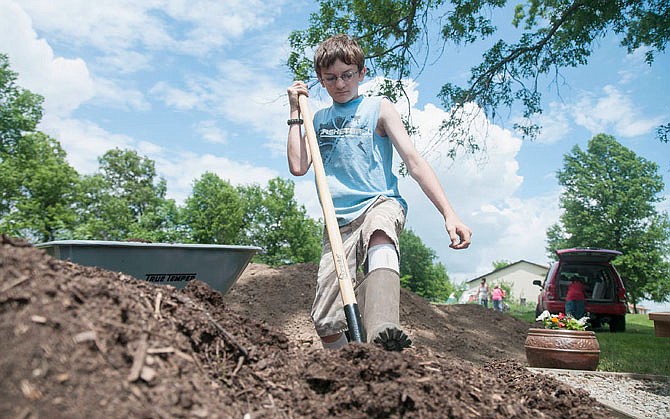For some gardeners, the idea of a native prairie is more exciting than a lawn or garden of exotic plants.
Growing native plants from seed was the subject of a Thursday virtual program by the Missouri Department of Conservation.
Specifically, viewers learned about cold stratification - a process necessary for the germination of many trees, shrubs and perennials.
Growing from seed is more cost effective, MDC naturalist Rena Schmidt said. Similarly, rare or less popular plants can often be difficult to find in nurseries and might be more readily available as seeds.
"The less common, the less popular a plant is, the less likely you're going to be able to get it from nurseries," Schmidt said.
The process can also be less labor intensive.
"Another reason that you want to grow from seeds is essentially it's less labor intensive," she said. "If you're planting like a huge plot, it's a lot easier to do seeds than it is to plant. It's also easier if maybe you're not the most physically fit."
Schmidt told viewers to look for seeds for plants that grow in their region, as native plants will grow better than other plants. Shopping from a Missouri distributor can help.
When deciding where to eventually plant seeds, gardeners should determine sunlight exposure, soil moisture level and soil type. It's also helpful to look at what's already growing in the plot.
"Weeds are actually helpful in determing what you can plant there yourself after you remove the weeds," Schmidt said. He recommended gardeners research the requirements of the weeds to see if the plants they want to grow have similar requirements.
After removing weeds, the next step is to till the soil.
One common method of planting involves simply tossing seeds out into the garden, but the focus of the MDC presentation was another method - cold stratification, which can increase germination rates by controlling the environment.
"If you just throw them out in the yard, anything can happen," Schmidt said.
Schmidt outlined cold stratification methods - one uses the refrigerator to simulate winter.
"I prefer the refrigerator method personally just because I don't like the maintenance of the tray method," Schmidt said.
Stratification in the refrigerator prevents birds from eating seeds.
"Our native birds enjoy our native seeds," she said. "That's what they've eaten for eons."
Stratification mimics winter - a season necessary for many native Missouri plants to germinate.
For the refrigerator method, add seeds to a plastic bag and covered with sand or vermiculite. Moisten the mixture and place the baggies, marked with the date. They should stay in the cold for several months.
In spring, after the last frost, which is typically in April, empty the bags into the plot.
Another method involves planting the seeds initially in covered trays and leaving them outside to actually experience winter.
Prairie Moon Nursery offers online resources helpful for growing native plants, Schmidt said. These resources can be found at www.prairiemoon.com/blog/resources-and-information.

